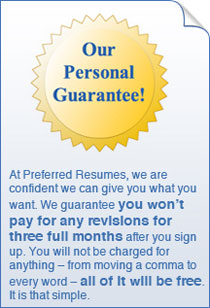Using Your Resume and Cover Letter to Make Your Case
|
|
As in any good legal brief, both assertions and evidence must be properly structured and correlated in a good resume. Disorganized resumes that do not relate well to their purposes or lack internal correlation fail to make the mark. For creation of a soundly structured resume, you must make a proper cover letter and first part of the resume, and back it up with clearly structured and relevant evidence.
Making your case through the cover letter and objective statement of a resume
Whether in the cover letter or the first part of the resume, remember that to properly promote yourself and get your case admitted you need to focus more on the needs of the employer and less on your personal needs. Expressions of personal need are made only where required to bolster the feeling that personal needs of the candidate are aligned with the needs of the recruiter.
Expressing any information that is irrelevant to the recruiter is a sure prospect-killer, and would decrease your chances of being recruited . That you are out of a job does not matter, that you have four kids and ailing parents does not matter, that you need a job to survive does not matter: but it does matter if you have been jobless for more than sixty days and recruiting you empowers the employer for tax breaks, and it does matter if you are an energetic, eager, worker, who can become an asset to the employer. The employer is worried about his or her own needs; don’t try to saddle him with yours.
Your cover letter and the objective statement in your resume should be dealt with extreme care, for recruiters would rarely go beyond the first paragraph of a resume, and most don’t even glance at cover letters. On the other hand, some only read first paragraph of a cover letter, and then scan the resume to find whether the candidate meets the prima facie requirements of the job. They may not read the objective statement at all. Though this does not reduce your duty to perfect other parts of the resume, it increases the need to create well-drafted cover letters and objective statements that are complete in themselves and can either substitute for each other, or act complementary if a recruiter takes the pains to read through both.
Essentially, both your cover letter as well as the objective statement of your resume should mention the following information:
- Your qualifications
- The job title sought
- The job location
- Length of work-experience in relevant fields
- Reflection of candidate qualities mentioned in the job advertisement
- Salary expectations
- The rationale as to why you are the right candidate for the job
While presenting other parts of the required information is simple enough, efforts should be taken to properly draft a single statement that exposes the rationale of the candidate fitting the requirements of the job. This is no high and mighty statement, but should be simple and logical. ''I am the best'' or ''I have been there, have done it'' does not cut any ice with an employer, but the facts that you like the opportunities presented by the position for given reasons, and that you are a quick learner, are relevant.




